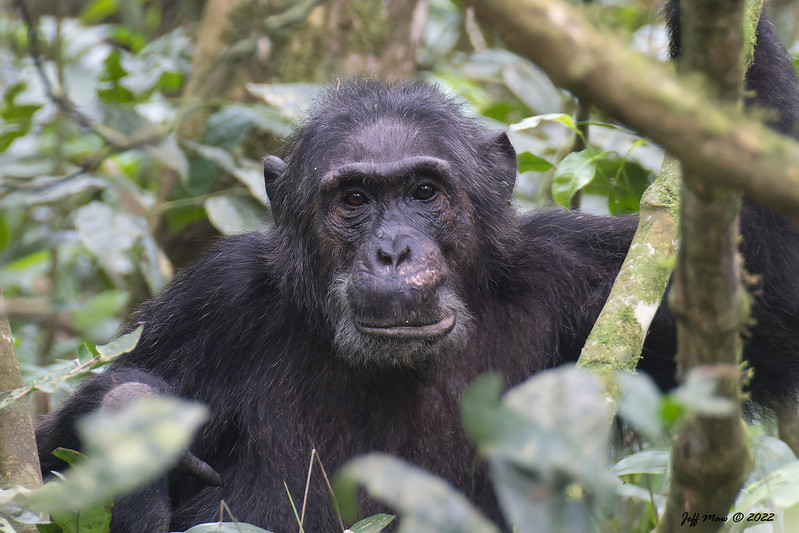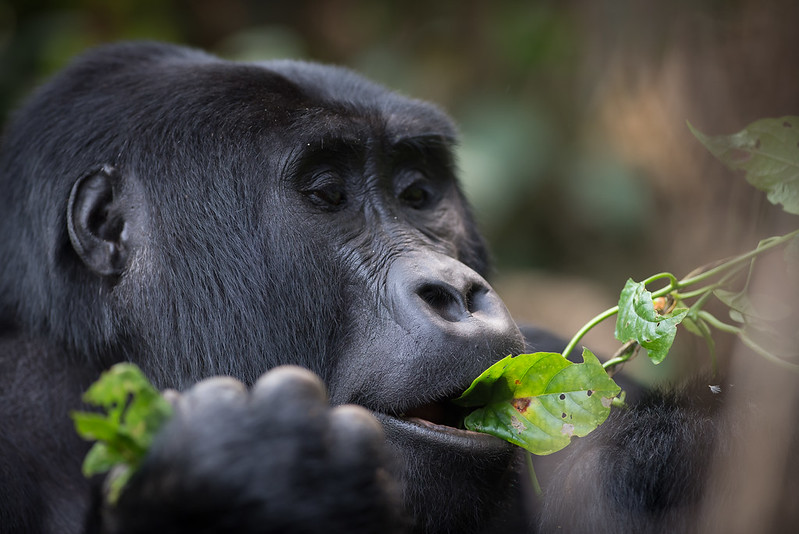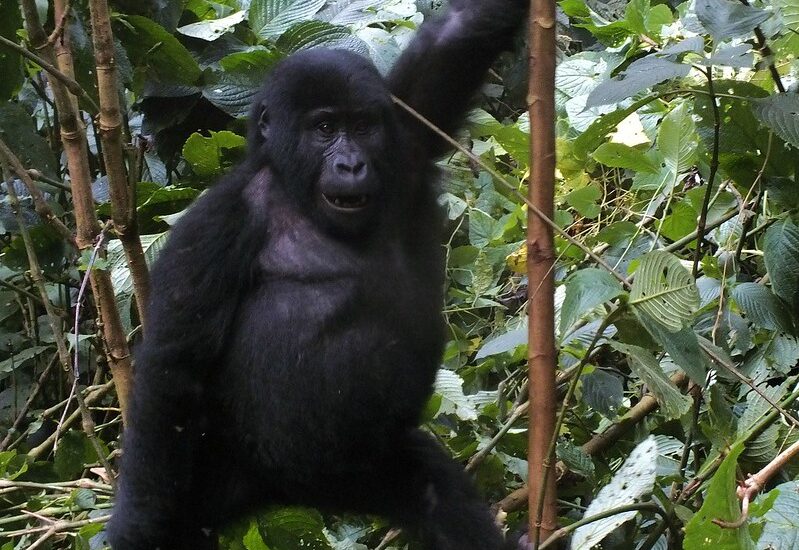Chimpanzee trekking price increase. Every two years, the Uganda Wildlife Authority (UWA) reviews the conservation…
What is a Gorilla’s Weakness?
What is a Gorilla’s Weakness?
Gorillas are among the most impressive animals on Earth, celebrated for their strength, intelligence, and social complexity. These giant primates have captivated researchers, wildlife enthusiasts, and conservationists alike for decades.
As the largest of the great apes, gorillas possess immense physical power and a deeply developed social structure that enables them to thrive in the forests of central Africa. But, like all animals, gorillas also have weaknesses—vulnerabilities that, despite their incredible capabilities, leave them susceptible in certain situations.
In this article, we will explore some of the key weaknesses of gorillas, examining their physical, behavioral, and environmental challenges. While gorillas are mighty creatures, understanding their weaknesses can shed light on their vulnerability and why they are a critically endangered species.
1. Lack of Natural Predators: The Silverback’s Leadership Role
One of the most notable aspects of gorillas’ social structure is the dominant male, known as the silverback. This powerful leader plays a critical role in protecting the group, ensuring the safety of the females and offspring. Silverbacks are incredibly strong and are often capable of defending the group from potential threats. However, their position as the protector of the group is also a point of vulnerability.
The Challenge of Leadership
While the silverback’s physical strength makes him formidable, this role comes with a certain degree of pressure and vulnerability. If a silverback becomes injured, old, or weak, it could jeopardize the safety of the entire group. Other males may challenge him for dominance, and if the silverback is unable to defend his position, it could lead to a shift in leadership, sometimes leading to conflict or even the loss of members within the group. This transition can destabilize the social structure of the troop and pose challenges to the survival of the younger gorillas.
2. Vulnerability to Disease
Despite their strength and size, gorillas, like all living organisms, are susceptible to diseases. Their immune systems, while robust, are not immune to the threats of pathogens. Disease is one of the most significant weaknesses that threaten the gorilla population today.
Respiratory Illnesses
One of the primary concerns for gorillas in the wild and in captivity is respiratory infections. Gorillas share approximately 98% of their DNA with humans, making them highly susceptible to many of the same diseases that affect humans. These include common respiratory infections such as the flu and cold viruses, which can be transmitted to gorillas through close contact with humans or other animals. The impact of such diseases on gorilla populations can be severe, especially since they often lead to complications and sometimes death.
The spread of diseases, such as the human respiratory viruses, is one of the reasons why wildlife experts emphasize the importance of limiting human contact during gorilla trekking and why there are strict rules in place to avoid exposing them to pathogens.
Ebola
Another significant threat to gorillas is the Ebola virus, which has decimated gorilla populations in parts of Africa in the past. Ebola outbreaks have led to the deaths of hundreds of gorillas in regions where they live, particularly in areas where humans and gorillas share overlapping habitats. Since gorillas and humans both belong to the primate family, diseases such as Ebola can spread quickly between the two species.![]()
While gorillas are not as likely to contract diseases like malaria as humans are, the spread of viruses within their groups can have a profound impact on their population numbers. These illnesses make gorillas incredibly vulnerable, particularly in regions where conservation efforts are not as robust or where contact with human settlements is frequent.
3. Habitat Destruction and Loss of Environment
Gorillas are primarily forest-dwelling animals, living in the dense jungles of central Africa. These forests provide them with food, shelter, and the space they need for socializing and reproduction. However, one of the greatest threats to gorillas is the loss and fragmentation of their natural habitats.
Deforestation and Human Encroachment
Human activities, including logging, agriculture, and infrastructure development, have led to the destruction of the gorillas’ natural habitats. As forests are cleared for farming or urban development, gorillas are forced to navigate smaller, fragmented areas, which limits their access to food, shelter, and mates. This fragmentation also isolates gorilla populations, preventing them from mingling with other groups and contributing to genetic isolation.
Climate Change
In addition to deforestation, climate change is another threat to gorilla habitats. Changing weather patterns and temperature fluctuations can alter the availability of food sources and lead to shifts in the ecosystem that gorillas rely on. Droughts, floods, and unpredictable weather can disrupt the balance of the forest ecosystem, affecting the gorillas’ diet and their ability to find suitable living conditions.
4. Human-Wildlife Conflict
Gorillas are not naturally aggressive toward humans, but when their habitats are threatened, or when they are approached too closely, they may feel the need to defend themselves. Unfortunately, human-wildlife conflict has become a significant issue for gorillas, particularly as they share their environments with human populations.
Poaching
One of the most significant threats to gorillas is poaching, which is driven by the illegal wildlife trade. Gorillas are hunted for their meat, or they are captured and sold into captivity for display in zoos or illegal pet trades. Poaching is a direct result of human encroachment into gorilla habitats, and despite the efforts of conservationists and park rangers, it remains a persistent issue. Poaching not only reduces the gorilla population but also destabilizes social structures, particularly when silverbacks are killed or captured.
Habitat Encroachment
Human encroachment into gorilla habitats often leads to direct conflict between humans and gorillas. As humans expand into the forested regions that gorillas occupy, they come into contact with the apes, often leading to dangerous confrontations. Gorillas, in their attempts to defend their territory or resources, may become aggressive if threatened, but their natural inclination is usually to avoid conflict. The result is a tragic scenario in which gorillas are forced to retreat further into the wild or are killed in attempts to protect their habitat.
5. Reproductive Challenges
Another weakness that can affect the gorilla population is reproductive challenges. Gorillas have a slow reproductive rate, which means that any threat to their population can significantly impact their numbers.
Long Gestation Period
Female gorillas have long gestation periods, typically lasting around 8.5 months, and they give birth to a single infant at a time. After birth, the mother cares for the infant for several years, as the baby gorilla is dependent on the mother for food, protection, and learning. This slow reproductive rate makes it difficult for the population to rebound quickly from declines due to disease, poaching, or habitat loss.
Additionally, the loss of a silverback or other important members of the group can disrupt the social structure, which can lead to challenges in reproduction, particularly if younger or less experienced males try to take over. The social bonds between males and females are crucial to maintaining strong, healthy gorilla groups.
6. Dependence on Forest Ecosystems
Gorillas are herbivores and rely heavily on the availability of plants, fruits, leaves, and stems to survive. Their dependence on these forest ecosystems makes them vulnerable to changes in the environment. Overhunting of certain plant species or changes in vegetation due to climate change or deforestation can have a direct impact on gorilla diets.
Limited Dietary Variety
Unlike some animals that can adapt to a wide range of diets, gorillas have a relatively limited selection of food. They primarily rely on vegetation that is abundant in their forest environments. If deforestation or climate change reduces the availability of these foods, gorillas may struggle to find enough to eat, which can result in malnutrition or starvation.
While gorillas are undeniably powerful creatures, they are not immune to weaknesses. Their reliance on fragile ecosystems, vulnerability to disease, slow reproductive rate, and the pressures of human encroachment present significant challenges to their survival. Understanding these weaknesses is crucial for conservation efforts aimed at protecting gorillas and ensuring that these incredible animals continue to thrive in the wild.
Efforts to address these weaknesses through habitat protection, anti-poaching initiatives, and responsible tourism are critical to safeguarding the future of gorillas. By addressing these vulnerabilities, we can help protect the gorilla populations and preserve the delicate balance of the ecosystems that support them. Despite their strengths, gorillas are at a crossroads, and only through concerted global efforts can we hope to secure their place in the wild for generations to come.


